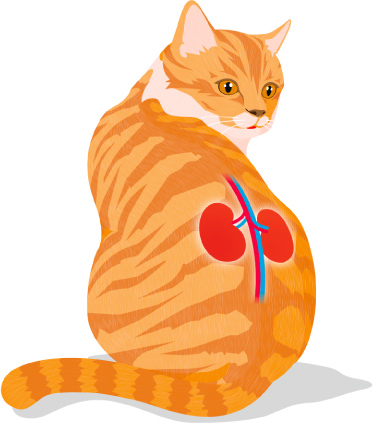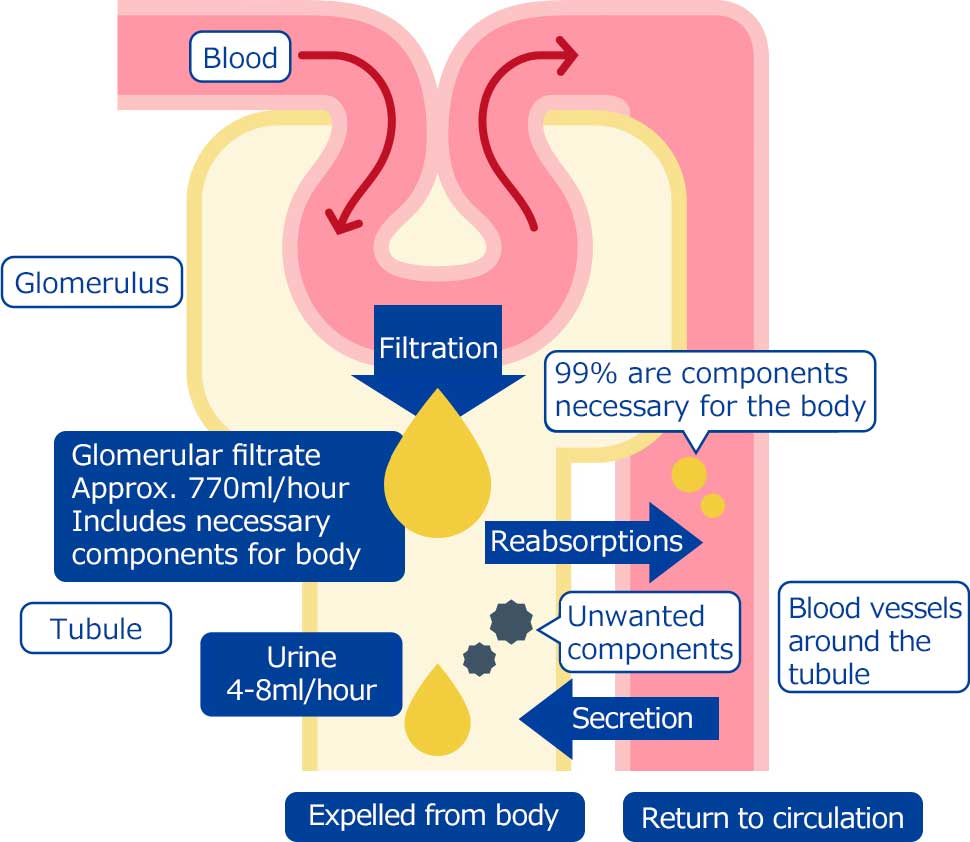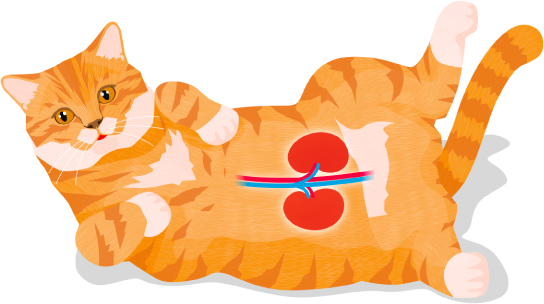 Functions of Feline Kidney
Functions of Feline Kidney
This page was reviewed by:
Dr. Kenji Miyamoto, D.V.M., Director of the Japanese Small Animal Hemodialysis Association
Water makes up 60% of a cat’s body weight and is essential to maintain and regulate body functions. Every day, a cat takes in water by drinking or eating. One third of this water is lost through breathing, sweating and defecating. The remaining two thirds is eliminated from the body through urination, maintaining a constant amount of water in the body. The kidneys produce urine, and play an important role in maintaining the right amount of water in the body.
Where is the kidney located?
A cat has two kidneys, one on each side of the abdomen just below the last rib.

Functions of a kidney
The kidneys perform many crucial functions, including:
-
- 1. Producing urine
- The kidneys of a cat only weigh about 20g each, yet it receives approximately 20 percent of the blood pumped out from the heart every minute.
The blood passes through a filter system called the nephron, which consists of a glomerulus that filters the blood and a capillary tubule that regulates the filtrate (the material which is removed from the blood) in a complex manner, according to the needs of the body. The nephron excretes water as well as waste products and unwanted components in the blood, and this is expelled from the body as urine.
-
- 2. Maintaining internal body environment
- The filtrate of the glomerulus contains many components necessary for the body, such as sodium. To maintain a constant internal environment, the renal tubules reabsorb these components back into the body and unwanted or excessive components are secreted from blood vessels around the renal tubules into the renal tubule.
In a 4 kg cat, the glomeruli produce around 770 ml of filtrate per hour, but more than 99% of the filtrate is reabsorbed back into the body, leaving only 4 to 8 ml to be made into urine.

-
- 3. Controlling blood pressure
- When the blood pressure is decreased, the filtration rate inside the kidney also decreases. This is detected by a pressure-sensitive receptor in the kidney, and a substance called renin is released. Renin acts on a substance called angiotensinogen, forming a group of hormones called angiotensin. Angiotensin then causes small blood vessels in the body to constrict, leading to blood pressure increase.
Conversely, if the blood pressure is high, the amount of renin is decreased and blood pressure is decreased.
-
- 4. Stimulating the production of red blood cells
- Healthy kidneys produce a hormone called erythropoietin, which stimulates the bone marrow to make red blood cells. Diseased kidneys do not make enough erythropoietin, leading to fewer blood cells and anemia.
-
- 5. Producing calcitriol (active form of vitamin D)
- The main components of bone are phosphorus and calcium.
The absorption of phosphorus and calcium in the diet is primarily controlled by a substance known as calcitriol. The material needed to produce calcitriol is stored in the liver, sent to the kidneys as needed, and synthesized in tubules. Calcitriol, along with several other hormones, regulate the excretion of absorbed phosphorous from the kidney.
When the kidney tissue is damaged, the production of calcitriol inside the body decreases, leading to disrupted phosphorous-calcium balance and eventually can cause further damage to the kidney (called fibrosis) and bones (called osteolysis).


